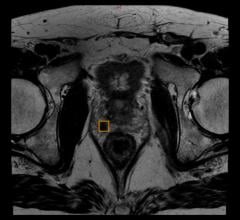March 13, 2008 - Researchers involved in a large, multi-institutional study using positron emission tomography (PET) imaging with the radiotracer fluorodeoxyglucose (FDG) were able to classify different types of dementia with very high rates of success, raising hopes that dementia diagnoses may one day be made at earlier stages.
"Previously, scientists have been able to look only at the surface of the brain to differentiate various types of dementia," said Lisa Mosconi, Ph.D., assistant professor of psychiatry at the New York University School of Medicine. "With FDG PET, we were able to develop standardized disease-specific patterns from which we could correctly classify dementia more than 94 percent of the time."
The study, which was reported in the March issue of the Journal of Nuclear Medicine, measured the cerebral metabolic rate of glucose (CMRglc)—the amount of sugar the brain uses to fuel its activities—in various areas of the organ. A decrease in this rate is indicative of a loss of nerve cells and of dysfunction associated with dementia. Because FDG behaves like glucose when injected into the body, its location in the PET scans pinpointed the specific area where glucose utilization had fallen below normal levels as compared to an age-appropriate control group.
"Each type of dementia examined—Alzheimer's disease (AD), frontotemporal dementia (FTD), and dementia with Lewy bodies (DLB)—affects a different area of the brain. Based on where in the brain this decrease occurred, we were able to determine which type of dementia a patient had," Mosconi explained.
For instance, only AD patients have severe CMRglc reductions in the hippocampus (a part of the brain located deep in the organ and, prior to this study, unreachable for examination), whereas FTD patients have only mild abnormalities in the area and DLB patients have no hippocampal hypometabolism. "We believe that the ability to measure this embedded area in the brain will be important in identifying AD at an early stage," added Mosconi.
This is also the first study to use FDG PET to compare an early stage of dementia known as mild cognitive impairment (MCI) with dementing diseases other than AD. According to the researchers, the results suggest that the ability to detect differentiated uptake of glucose may result in earlier and more accurate diagnoses of MCI and better disease management.
"Because the incidence of these disorders is expected to increase dramatically as the baby-boomer generation ages, accurate diagnosis is extremely important—particularly at the early and mild stages of dementia when life-style changes and therapeutic interventions would be most effective," said Mosconi.
AD and other forms or dementia can take several years to progress to a debilitating stage, and a diagnosis based on FDG-PET assessments at the first sign of onset may improve the prognosis of MCI patients. "Early diagnosis may enable earlier treatment and empower people to plan for their future sooner, including financial and legal matters. It is also important for individuals at risk to take care of treatable risk factors, such as hypertension and high cholesterol levels," said Mosconi. "By changing their diet and increasing exercise, many MCI patients may deter dementia for years—perhaps even until more effective treatments are developed."
The study comprised 548 subjects and is the largest FDG PET study measuring brain metabolism in different dementing disorders to date. Researchers from PET centers in the United States and Europe were able to apply and share objective image analysis procedures easily, opening up the possibility that this diagnostic procedure could be adapted to a clinical setting.
Dementia is a general term for a progressive brain dysfunction that results in the loss of memory and other intellectual abilities serious enough to interfere with daily life. MCI patients demonstrate a decline of cognitive performance that is more pronounced than expected from age but not severe enough to meet criteria for dementia. The clinical course of these patients is challenging to forecast on the basis of clinical measures alone. Many diseases can result in a form of dementia, the most common one being AD, a progressive and fatal brain disease. According to the Alzheimer's Association, more than five million people in the United States have AD, and by 2050, that number could triple. Currently it is the seventh leading cause of death in the United States.
Co-authors of "Multicenter Standardized 18F-FDG PET Diagnosis of Mild Cognitive Impairment, Alzheimer's Disease, and Other Dementias" include Wai H. Tsui, New York University School of Medicine and the Nathan Kline Institute, New York, N.Y.; Karl Herholz, University of Manchester, Manchester, U.K.; Alberto Pupi, University of Florence, Florence, Italy; Alexander Drzezga, University of Munich, Munich, Germany; Giovanni Lucignani, University of Milan, Milan, Italy; Eric M. Reiman, Good Samaritan Banner Center, University of Arizona, Phoenix, Ariz.; Vjera Holthoff, University Hospital of Dresden, Dresden, Germany; Elke Kalbe, Medical Faculty, University of Cologne, Cologne, Germany; Sandro Sorbi, University of Florence, Florence, Italy; Janine Diehl-Schmid, University of Munich, Munich, Germany; Robert Perneczky University of Munich, Munich, Germany; Francesca Clerici, University of Milan, Milan, Italy; Richard Caselli, Arizona Center for Alzheimer's Disease Research, Phoenix, Ariz.; Bettina Beuthien-Baumann, PET-Center Dresden-Rossendorf and University Hospital of Dresden, Dresden, Germany; Alexander Kurz, University of Munich, Munich, Germany; and Satoshi Minoshima, University of Washington, Seattle, Wash.
Source: Journal of Nuclear Medicine and jnm.snmjournals.org
For more information: www.snm.org


 July 02, 2024
July 02, 2024 








